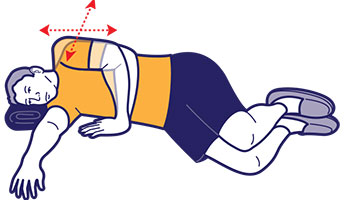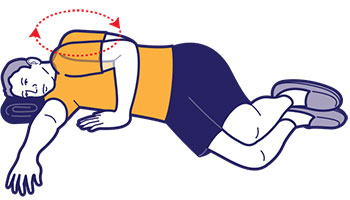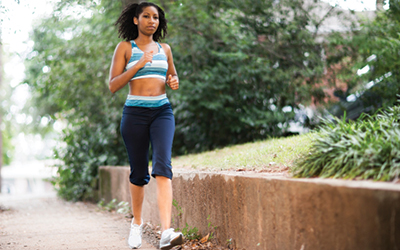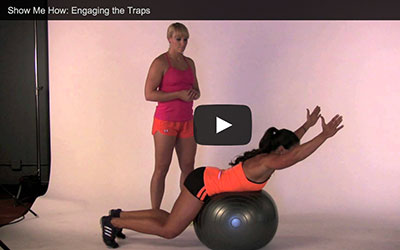Q1: How do I gain weight the healthy way?
I lose weight very quickly when I exercise. I think I’d look and feel better if I gained a bit. What’s the healthiest and most efficient way to do that?
A. “Lean, lightly muscled types — ectomorphs, to fitness pros — have a tough time keeping weight on,” explains Angelo Poli, elite-level ISSA trainer and owner of Whole Body Fitness in Chico, Calif. While this may sound like an enviable problem to many of us, ectomorphs sometimes have to pay even closer attention to diet and exercise than people struggling to drop a few pounds. “Gaining lean muscle mass can be every bit as difficult as losing fat is for people with different body types,” Poli says.
If you are trying to bulk up efficiently and safely, Poli suggests sitting down to eat five or six times a day, with an emphasis on high-quality protein (such as eggs and organic meats), plenty of healthy carbohydrates (whole-wheat pasta, multigrain bread, potatoes), and healthy fats from sources such as olive oil, avocados and almond butter.
And while you shouldn’t give up on fruit and veggies, Poli cautions against filling up on them, since they’re bulky but low in calories. He also encourages healthy snacks, especially nuts and dried fruits, which are an excellent source of protein, carbs and calories. So keep a bag or two of trail mix within reach.
When you’re at the gym, perform three or four strength-training workouts a week, consisting of multi-joint exercises like squats, deadlifts, lunges, presses and rows. On each exercise, choose the heaviest weight you can handle for eight to 12 reps (or eight to 12 reps per side, depending on the exercise), and strive to get stronger each workout.
When doing cardio, avoid long, slow running or cycling workouts, which can work against your weight-gaining efforts. “Circuit strength training, sprint intervals or swimming intervals are the best cardio choices for ectomorphs,” Poli says, because you’ll maintain your cardiovascular health without burning off muscle mass.
Q2: How do I avoid hurting my knees when I do cardio?
I love running, biking, and using elliptical trainers and treadmills, but I have a bit of degeneration in one of my knees. How can I get my cardio fix without causing soreness or doing further damage to the joint?
A: Knee pain doesn’t have to mean the end of your cardio career, says Dean Somerset, medical and rehabilitation coordinator for World Health gyms in Canada and coauthor of the DVD series Muscle Imbalances Revealed. It might mean you have to take a few extra precautions to keep your joints healthy while you’re running, rowing or riding, however. Follow these steps to find a pain-free cardio regimen that won’t damage your joints:
1. Choose wisely. Not all forms of cardio stress your joints in the same way, so hunt around for a modality that keeps your knees happy. “Ellipticals and bikes are usually easier on your knees than running on a treadmill,” Somerset says. And for low impact, nothing beats swimming. “But it comes down to what works best for you. So you might have to try out a few different forms of cardio” to find the right one.
2. Check your form. If you’re a runner, keep most of your weight on the balls of your feet as you run, and avoid “heel striking” (coming down hard on your heel on each stride). If you cycle, make sure your seat is high enough so that your leg is almost straight — but not quite — in the down position of each pedal stroke. Any doubts on form? Grab a qualified trainer and get some tips.
3. Warm up. Even before you start your workout of choice, lay the groundwork for proper form with a thorough warm-up. Start with a few minutes on a foam roller, focusing on tender areas in your glutes, quadriceps, calves, hamstrings, and the insides and outsides of both thighs. Follow that with dynamic warm-up drills, which lengthen tight muscles and establish healthy movement patterns: Ankle rolls and high knee walks are good pre-cardio choices. Conclude with body-weight squats, lunges and planks. Together, these moves ensure that your cardio workout — or any workout you do afterward — targets the appropriate muscles while keeping the strain on your joints to a minimum. (For another great dynamic warm-up, see The Perfect Warm-Up.)
Fitness Fix: Easing Shoulder Pain
Shoulder pain is a common problem for both elite athletes and the average, active adult. Our expert explains how best to deal with the discomfort.
Shoulders have more moving parts than you probably realize, says Stacy Barrows, PT, GCFP, CPI. That’s part of why they’re so prone to injury. “The ball-and-socket joint, the shoulder blades and the collarbones all require a refined coordination of the muscles that control them,” she explains. Because traumatic injury, overuse and habitual slouching can all upset this delicate muscular balance, shoulder pain is a common ailment among active people.
If one or both of your shoulders hurt, avoid any upper-body exercise for a few days, icing the area periodically. If the joint still feels tender to the touch, or so sensitive that you can’t lie comfortably on your injured side, Barrows advises you seek out a sports-medicine physician or a physical therapist for a customized therapeutic program.
Once the discomfort subsides, work these two movements into your daily routine several times a week to help prevent additional problems. Perform two sets of 10 reps of each.
1. Scapular Rotation
- Lie on your right side and place a small towel under your head.
- Place your left hand in front of your body, pointing your elbow toward the sky.
- Gently shrug your shoulder toward your left ear. Then tilt your scapula down toward your hip.
- Next, slowly and smoothly move your shoulder toward the front of your body then backward, making sure to keep your body still.
- Finish the exercise by rotating your shoulder in a clockwise circle, and reversing the entire sequence for one rep.
2. Wall-Facing Shoulder Mobilizations
- Stand facing a wall and place your forearms against it, hands and elbows at shoulder width, elbows at shoulder height, palms against the wall.
- Press your shoulders downward toward your beltline and keep them there throughout the movement.
- Keeping your right hand on the wall and your right upper arm completely stationary, slowly rotate your trunk back and to the left so that your left arm lifts a few inches off the wall.
- Complete 10 reps to the left, then repeat the movement on the other side.






This Post Has 0 Comments